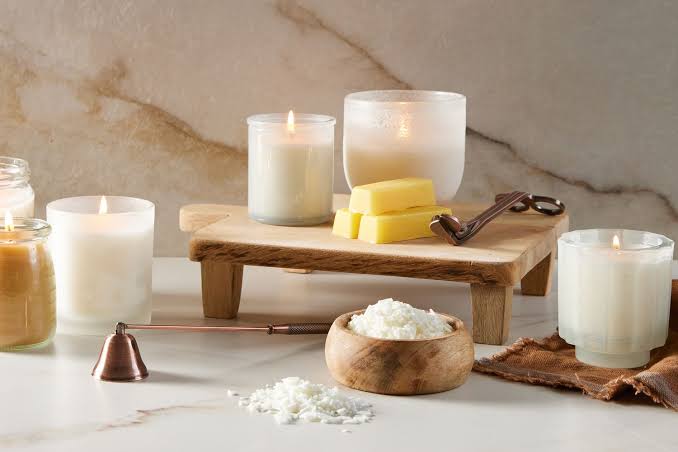Candle making is a creative and rewarding craft, allowing you to experiment with different waxes, fragrances, and colours. One common question among beginners and seasoned makers alike is: Can you mix different types of wax? The answer is yes—but there are important factors to consider. In this guide, we’ll explore which waxes blend well together, the benefits and challenges of mixing, and how to achieve the best results.
Understanding Different Types of Wax
Before diving into mixing, it’s essential to understand the characteristics of different waxes. Each type has unique properties that affect burn time, scent throw, and texture.
Paraffin Wax
- Affordable and widely available.
- Offers excellent scent throw and smooth finishes.
- Burns faster and may produce soot if not properly wicked.
Soy Wax
- Natural and eco-friendly option.
- Burns cleaner and lasts longer than paraffin.
- Can be prone to frosting and may require a higher fragrance load.
Beeswax
- Naturally derived and known for its air-purifying properties.
- Has a subtle, natural honey scent.
- Expensive compared to other waxes and has a higher melting point.
Palm Wax
- Creates unique crystalline patterns.
- Burns slowly with a firm texture.
- Can be sustainably sourced but is often controversial due to environmental concerns.
Coconut Wax
- Soft and creamy with excellent scent retention.
- Often blended with other waxes for better structure.
- Higher cost but offers a luxurious finish.
Gel Wax
- Transparent and used for decorative candles.
- Requires specific fragrances and wicks.
- Does not blend well with other waxes due to its unique composition.
Is It Possible to Mix Different Waxes?
Yes, different waxes can be mixed to enhance performance, texture, and burn quality. However, the success of blending depends on:
- Melting Points: Waxes with significantly different melting points may not integrate well.
- Texture & Density: Some waxes are softer or harder than others, affecting structure.
- Burn Characteristics: A mix may alter the way a candle burns, requiring wick adjustments.
For a successful blend, testing in small batches is key. If you’re looking for high-quality wax for candle making, ensure that the waxes you choose have compatible properties.
Benefits of Mixing Different Waxes
Blending different waxes allows you to customise your candles to achieve:
- Longer Burn Time: Harder waxes help extend candle longevity.
- Enhanced Scent Throw: Paraffin improves fragrance diffusion, while soy provides a cleaner burn.
- Improved Texture & Appearance: Certain blends reduce frosting and enhance smoothness.
Challenges & Considerations
While mixing wax can offer many benefits, there are challenges to be aware of:
- Uneven Burning: If the blend is inconsistent, one wax may burn faster than the other.
- Wick Selection: Different waxes require different wick sizes, so testing is crucial.
- Potential for Frosting or Separation: Soy wax, in particular, can develop a frosty appearance.
- Impact on Fragrance Retention: Some waxes absorb fragrance differently, affecting scent throw.
Popular Wax Blends & Their Uses
Here are some common wax combinations and why they work well:
Soy & Paraffin Blend
- Offers a balance between scent throw and clean burning.
- Reduces the frosting effect seen in pure soy candles.
Beeswax & Coconut Wax
- A natural blend that enhances texture and burn quality.
- Works well for pillar and container candles.
Soy & Palm Wax
- Enhances crystallisation for unique candle designs.
- Suitable for decorative and textured candles.
Custom DIY Blends
- Experimenting with different ratios can yield unique results.
- Best tested in small batches before full-scale production.
Tips for Successfully Mixing Wax
To achieve the best blend, follow these guidelines:
- Choose Compatible Waxes: Avoid mixing waxes with drastically different melting points.
- Start with Small Batches: Test different ratios to find the ideal mix.
- Adjust Wick Size Accordingly: A denser blend may need a larger wick for an even burn.
- Monitor Fragrance Load: Some waxes retain scent better than others.
Bottom Line
Mixing wax can enhance candle quality, allowing you to create custom blends that suit your needs. Whether you want better scent throw, a longer burn time, or a unique appearance, blending different waxes can provide excellent results. However, testing is key to achieving the right balance.
So, should you mix wax? Absolutely—but with careful experimentation and attention to compatibility. Happy candle making!




